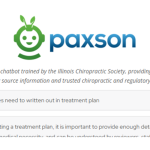
Build Your Business: Identify and Document Key Processes
Have you identified your core business processes- the key things in your practice that you find to be important? Documenting these key processes helps to find efficiencies and grow your business. Watch the video to learn more!
Transcript:
Last week, we introduced this idea for our doctors to begin to look at their practice as an opportunity not just for their patients today, but for patients well beyond when they decide to retire, move into another state, or move to another practice. At that stage, we want to make sure that you’re equipped, we want to give you some nuggets, so over the course of time, we’re going to pepper in a few videos to help you along some of this process. Really what we’re aiming for is we want our doctors to not just build themselves a job, but instead build their business in addition to that, and we believe that that’s really important, and especially not just for you, but also for your patients, wherever your patients go if you decide to retire.
These procedures, sometimes people think, Well, I don’t have to deal with all of these things. I don’t have to deal with this thought process until much later. And then much later comes much more quickly than what they anticipate. Or there’s something catastrophic that happens. In either of those cases, we want to help you begin to prepare and look at your practice is more than just a job, more than just employment, but as a business opportunity and begin to focus on that.
One of the key things I want to talk to you about today is really, your office processes. Now, this is beyond your HIPAA procedure manual and your OIG manual and all of those things. The question is this, if you identified your core processes, what are those key things that you have in your practice, that you find are really important? For example, it may be your marketing process, what do you do in order to market? It might be simply the patient flow from the time that they enter the front door, receive treatment, and then exit. It may be your billing and collection process, both from the patients and from insurance companies. But it could be your billing collection accounting process may be one of those, regardless of what those key core processes may be for you, you want to identify probably the top seven or so first. Identify those key core processes, and begin to document them. Now, this can be short, and if you do it well, it will actually be short, we’re not looking for a 500-page document begin to refine it, it probably will be about six pages, it’s bullet point driven. What happens, they enter the front door, they do this, they check in and you walk through each of those steps in your procedures, but they’re all bullet point. It’s short, easy, and easily defined by someone else coming in. And it makes things much more consistent.
So this does two things, not just help you prepare for the future. But it also helps you find efficiencies while you’re documenting these things and writing these things down and finding these core processes even identifying them, you may find some areas where you go, Hey, I need to spend a little bit more time here, I need to find a way to be a bit more efficient. Am I handling this in the best way? Am I a well-oiled machine? I had one doctor when I reached out and asked a whole series of doctors across the United States about what they were doing to prepare their practices. One doctor said basically you want to begin to act like you’re going to open more practices, just like yours, you have a special practice that does great work, maybe it can be better, but what are you going to do if you want to open it someplace else? This is how you want to identify, if you want to quick resource I would encourage you to grab the book Traction, it’s on the EOS system or the Entrepreneurial Operating System. But Gino Wickman really hammers down and deals with this documenting your core processes. In fact, there’s an entire chapter of the book that’s dedicated to helping you identify what those processes may be. And then also give examples of how you can write those processes. Now I also believe that procedures are going to be important as well because you may want to go on vacation from time to time or you may have a staff member, go on vacation and you need somebody to fill their place. And so I would strongly recommend you beyond the clean documentation of your core processes, which I believe is paramount and most important for this process of preparation. But also procedures and each one of your staff could even write their own procedures. I think we’ve helped you with a recent video on a tool that you could use to kind of help document those procedures and for those particular employees, including yourself I think this is important if you choose to bring in a temporary doctor or locum tenens when you go on vacation, these types of documentation both the process so we can understand the mindset and what makes your office and your practice special to also the procedures so they know exactly what to do through that procedure but the key is Doctor In your core process again the resource the book Traction by Gina Whitman there’s an entire chapter dedicated to helping you identify and document those four processes hopefully this will help you out we’ll catch you next week.

















